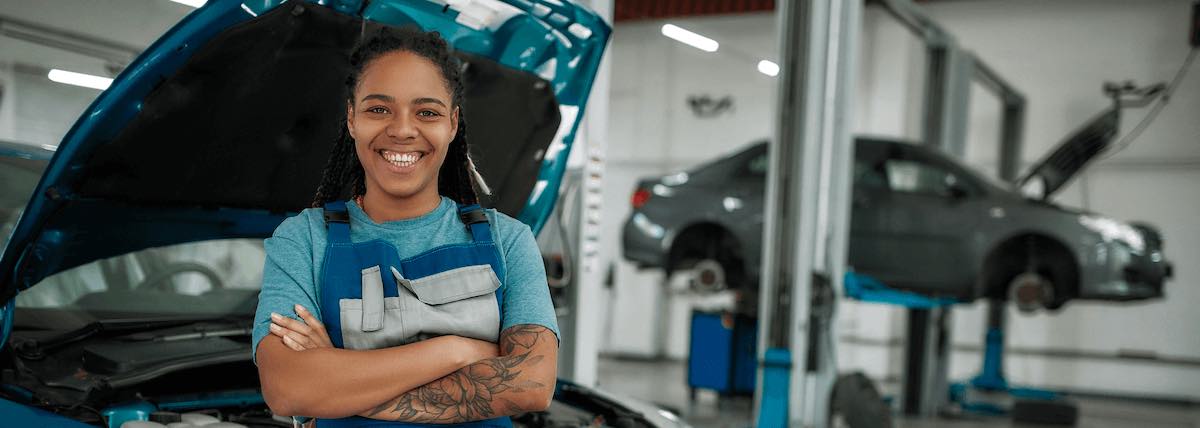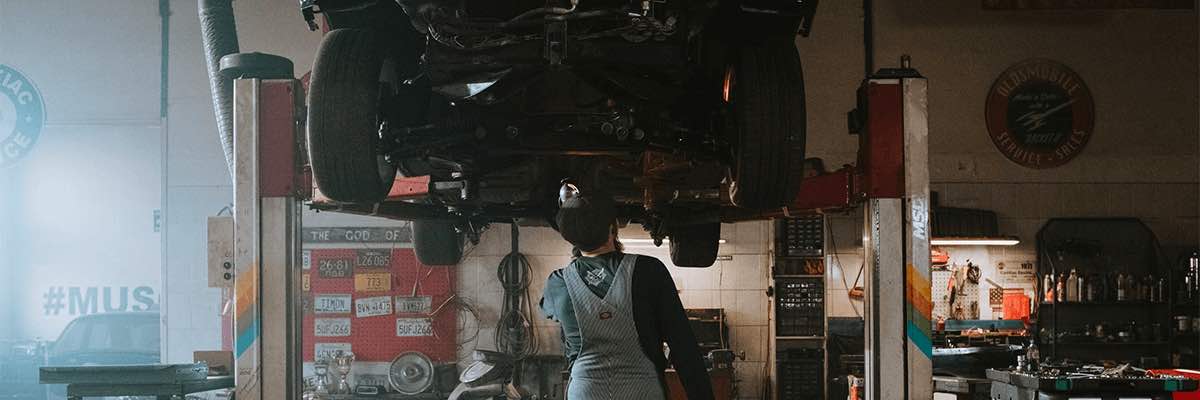Ultimate auto repair labor guide

Knowing how many hours are needed to complete a repair is key to providing customers with accurate estimates. And this is where an auto repair labor guide comes in handy as it empowers you to give customers price quotes that match the final bill.
As per our expertise, using an auto repair labor guide earns you a positive business reputation and wins you customers. Keep reading to learn:
The definition of an auto repair estimate
An auto repair estimate is a contract between the repair shop and the customer. It kicks off with an auto technician predicting how long it takes to complete the repair and adding up the costs involved.
An estimate should contain the above details and a disclaimer stating that the final costs may be different.
This document is shared with the customer who signs it as authorization for the shop to begin the repairs.
The difference between an auto repair estimate, quote, and bill
An estimate is just that — an estimate or prediction of the timing and cost of a job. As a result, estimates may not cover all the expenses needed to finish a repair.
In this sense, auto repair quotes are similar to estimates. However, our research indicates that the purpose of auto repair quotes is different as they give customers and insurance companies an expert opinion on the total cost of auto repairs.
Auto repair quotes are referred to if disputes arise over service or billing, which happens more often than you think. Through our practical knowledge, even experienced mechanics can’t see all the damage until they disassemble the vehicle.
Upon vehicle inspection and disassembly, it’s common to find more areas for repair not included in the original estimate.
Based on our firsthand experience, the best way to handle this situation is to communicate any updates on repair progress so your customer knows there is additional work to do and isn’t surprised when you send your invoice.
This brings us to what a bill refers to. While the document of final costs you create is known as an invoice, it’s a bill to the recipient. In this case, a bill to your customer.
A bill recaps the actual costs of a job, where an estimate predicts how much the job will cost. In short, a bill lets your customer know how much money they owe you for a repair.
Another difference is that your customer needs to send you payment for the bills you give them. Based on our observations, in contrast, most estimates only require a customer’s signature as an indicator of approval.
What are the most common car repairs?

Auto repairs are done to fix normal wear and tear. Our findings show that are the most common repairs:
- Battery replacements.
- Brake repairs.
- “Check engine” light service.
- Timing belt and water pump replacements.
- Wheel alignments.
Based on our observations, mechanics often don’t need an auto repair labor guide for these services as it’s common to price these jobs at a flat rate.
How to calculate auto repair quotes
Through our practical knowledge, when it comes to estimating the cost of auto repair labor and materials, things can seem straightforward enough.
However, it often takes more than multiplying your hourly rate and adding the price of parts. As per our expertise, this auto repair labor guide simplifies this process, so you make a profit on every job.
1. Estimate how long repairs will take
Labor costs significantly impact the total auto repair cost. So it’s crucial to predict an accurate time for labor on each job.
Don’t forget that longer projects come with more complications. This will factor into your rate if you price your hourly fee higher for complex repairs.
You can reference an auto repair labor guide, like this one, if you’re unsure how long a job will take.
But remember, time only accounts for half of your labor cost equation since you have to set an hourly rate that makes financial sense.
2. Determine your auto repair labor rates
The first step is to figure out the minimum labor charge to break even. This is known as your shop rate like it is in other trades.
To do this, total all your expenses and divide the sum by the number of hours you work. For example, if your monthly overhead is $10,000 and you work 40 hours a week, your shop cost is:
$10,000 / 4 weeks = $2,500/week
$2,500 / 40 hours = $62.50/hour
In the above example, you’ll need to charge $62.50 to cover all your expenses and not lose money on jobs.
However, to be an auto repair pro, you need to charge more than your shop rate to make money.
Our research indicates that you should include a markup of 50 – 60% in your hourly rate. This brings our example rate up to $94-100 hourly.
If the profit margin seems high, remember that car dealerships’ labor rates are around 20 – 25% higher than auto shops’ fees.
Not to mention that you can reinvest the extra cash into your business to fuel growth.
3. Include your parts and materials cost
When it comes to pricing repair jobs, you should add a markup to auto parts and materials like paint, sandpaper, screws, etc.
Based on our observations, a rule of thumb is to increase your discounted cost so that the price to the customer is what they would pay themselves.
However, always consult your state regulations to stay within the pricing laws for auto parts and repairs.
No more manual invoice calculations. Leverage our free invoice generator, and instantly send out professional PDFs to your clients, keeping your cash flow moving.
How to write an auto repair estimate
This auto repair labor guide wouldn’t be complete without looking at how to create estimates. Especially since a detailed and professional auto repair estimate shows customers your transparency and commitment to quality.
Better yet, you can put the steps below into a template to make your estimating process simpler. So without further ado, let’s dive in!
1. Check the vehicle

Vehicle inspection is an essential step in estimating auto repairs.
You need to inspect the vehicle area where you install replacement parts to know how much work is involved. You might have to remove other components for access to that location.
When a vehicle is in an accident, do a diagnostic scan of the electrical control units to learn of other issues to check.
2. Gather and record relevant information
To buy the right parts and materials, you only need a car’s VIN number. As per our expertise, it’s best to also record the vehicle’s year, make, model, submodel, engine type, and weight classes of trucks and vans.
The reason being, the more detailed your auto repair estimate is, the better. Especially if you have to deal with a vendor who still uses an old system with missing data.
Based on our firsthand experience, you want to speak to your customer about how the accident happened or when they noticed the mechanical issue as these details can highlight related problems not detected by the pre-scan.
After you inspect the vehicle and speak with the customer, write thorough notes on:
- Vehicle damage, including potentially affected areas.
- Tools needed to complete the job.
- Tasks that have to be subcontracted.
It could be days or weeks before you service the car you assessed, so your notes will refresh your memory on the work required.
Pro-tip: Professional auto repair estimators take pictures of the vehicle before and after the repairs. This documents pre-existing damage that’s not part of the estimate and shows what work was done. Do the same to protect yourself from potential disputes.
3. Calculate the cost of damages
If you base your rates on an auto repair labor guide, read the disclaimers carefully. Our findings show that estimated labor times are often based on the number of hours it takes to install original equipment manufacturer (OEM) parts in an undamaged vehicle.
As a result, your labor time may be different than an auto repair labor guide based on the amount of damage to the vehicle. And that figure may change again after a complete damage analysis.
But back to the damage cost section of your auto repair estimate!
Once you’ve fully assessed the level of damage to a vehicle, multiply the predicted number of hours by your labor rate.
Then add a parts and materials cost that includes your markup. And voila, this equals the total cost to your customer for repairs!
4. Provide a complete estimate
Last but not least, this auto repair guide looks at what to include in your auto repair estimate.
To start, your customer’s contact details along with:
- Your business info.
- Warranties on parts and labor.
- An expiry date of the estimate in case prices change before the customer authorizes repairs.
After completing the above steps, add this to provide your customers with accurate and informative quotes to win you more business!
Top auto repair estimate FAQs
Click the links below for answers to these popular auto repair labor guide FAQs:
How do you calculate labor costs for auto repair?
To figure out your labor charges, multiply the amount of time you predict the repair will take by your labor rate. This equals your total labor costs.
What you charge for labor will include your shop rate plus a markup for profit.
Our findings show that the industry standard for markup is 50 – 60%, so it’s best to use a figure somewhere in this range.
What is a fair price for a mechanic’s labor?
A fair mechanic’s fee depends on the market value of labor rates in your area. Other factors include:
- Business and facility overhead.
- A technician’s experience and certifications.
- Type, make, and model of the vehicle.
However, a good rule of thumb is to add a 50-60% markup on your shop rate to ensure all costs are covered and that you make a profit on repairs.
Image credit: Svitlana via Adobe Stock



